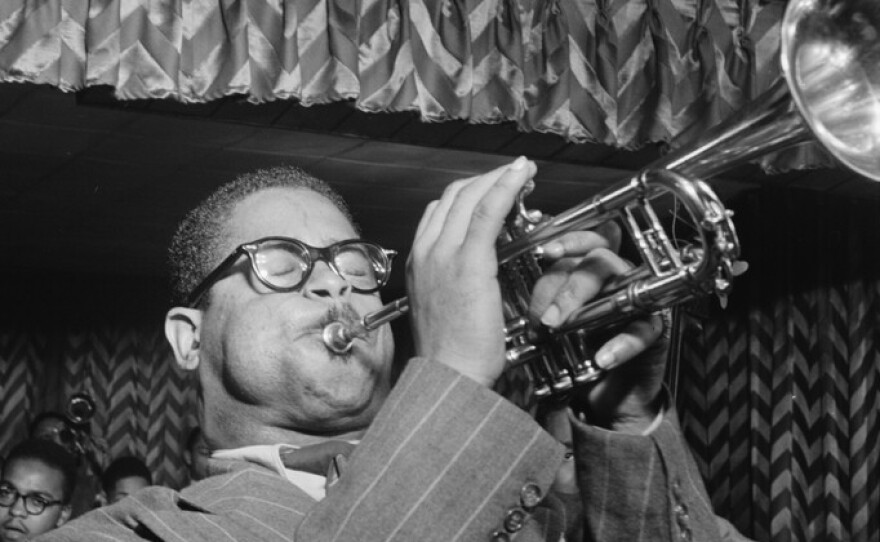Listen to the story above or read the script below:
Bebop, known as “modern jazz” to musicians who made it, was an innovation that still defines the genre today. The radical overhaul of rhythm and harmony, a new jazz vocabulary developed in New York City in the late 30s and early 40s.
Derived from the advanced soloing of swing age masters Lester Young, Coleman Hawkins and others, bebop was characterized by complex harmonies, asymmetrical phrasing, melodic rhythm techniques and mostly fast tempos.
I asked Seattle jazz icon, multi-instrumentalist and bebop lover Jay Thomas to tell me about what this change meant for jazz musicians:
"So many breakthroughs in the technical harmonic language happened with bebop," said Thomas. "It's the method of coming up with lines and melodies, and including all the Western harmony that came up from people like Debussy and Chopin, and people like that. But it still had blues going through it, because it was African American. It was like, on the shoulders of that big Harlem Renaissance."
Countless musicians were part of the bebop revolution, but the music was largely defined by a handful of unique artists who helped create it.
One of bebop’s earliest innovators, Charlie Christian was a member of the Benny Goodman band from 1939 to 1941, and he helped make the electric guitar a soloing instrument in big bands. Christian was influenced by horn players, and using tension & release, and an unending series of single note phrases, he cleared a path for the great bebop players to come.
Often playing alongside Charlie Christian at Minton’s Playhouse in Harlem was pianist Thelonious Monk. His music emerged from stride piano and church organ, developing a uniquely percussive technique, and unconventional melodic ideas. Monk’s compositions didn’t catch on right away, though his style and many of his songs were fully formed by the mid-40s.
Perhaps no other figure claims the bebop throne. Charlie Parker was a jazz virtuoso, an icon to musicians and fans alike, including the emerging poets of the Beat Generation. His almost endless hours of practicing led to complete control of his horn, and the time to explore the furthest reaches of harmonic structure. Yardbird’s incredible skill was matched by a knack for melody and a love of the blues.
Though one of the earliest of the bebop inventors, Dizzy Gillespie’s mastery of the style took years. His charming personality and hip character may have helped raise the profile of bebop more than any other player in jazz. His Latin jazz and big bands led to expanded rhythmic possibilities and sound colors. His sense of humor and a great hook created some of the standards of the bebop era, like “Salt Peanuts”:
Other major contributors to bebop include drummer Kenny Clarke, and pianist Bud Powell, and on the West Coast: Dexter Gordon, Charles Mingus, and there were many more.
There was a backlash: Louis Armstrong didn’t get it, calling the music “weird”, saying “you got no melody to remember and no beat to dance to.”
Bebop eventually came into its own, though early exposure still took the music less-than-seriously. Here’s Dizzy Gillespie in the 1947 musical film “Jivin’ in Bebop”, joking with MC Freddy Carter before launching into his song “Oop Bop Sh’bam” (listen in audio version of this story).
Jazz musicians of all ages are still playing bebop today. The expansion of the language changed jazz forever. The complexity, the beauty and the indefinable coolness of the music will always challenge and thrill musicians… and jazz fans, too.








